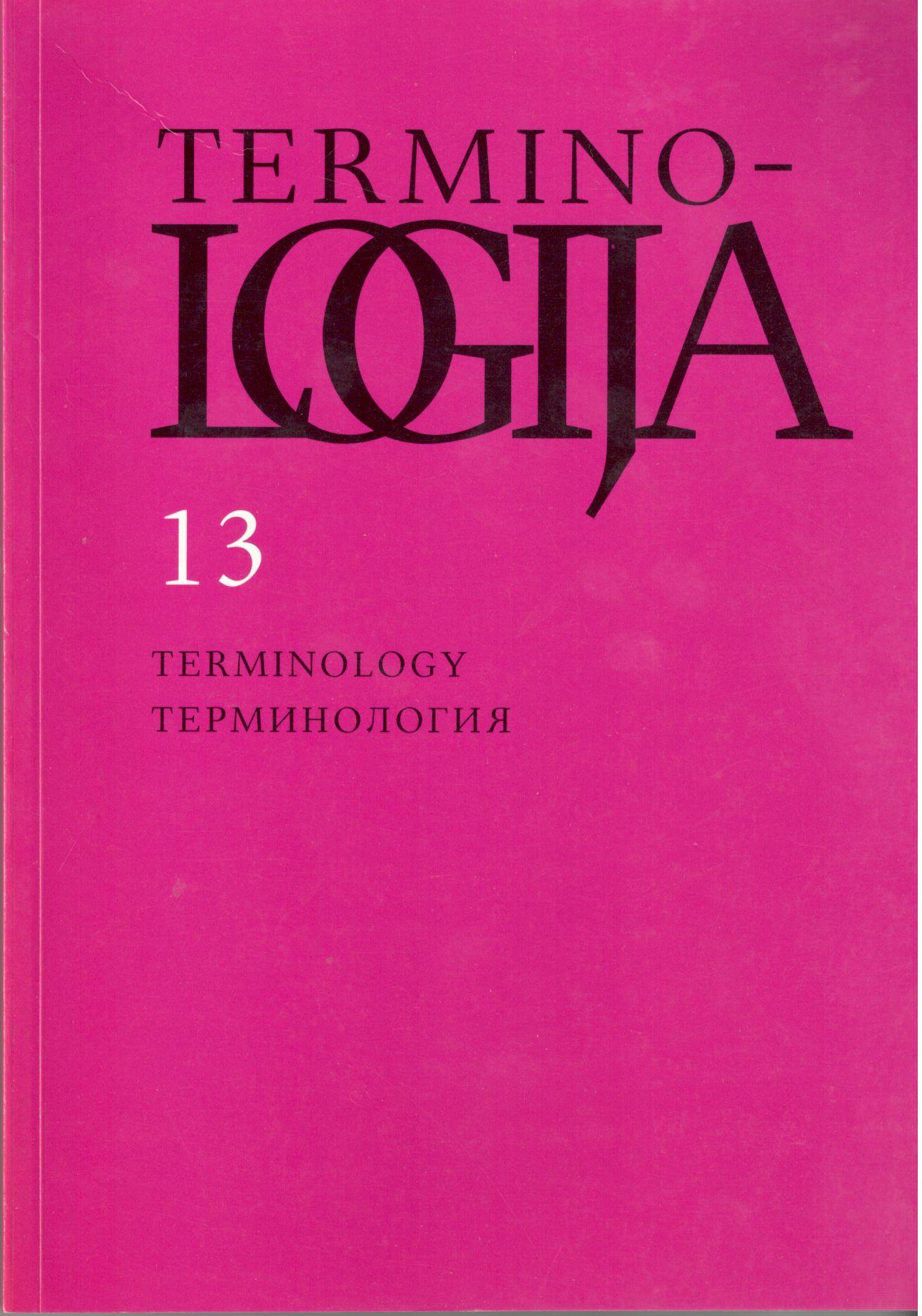Religijos terminijos tvarkyba Draugijoje
Ordering of religion terminology in Draugija
Author(s): Aušra RimkutėSubject(s): Language and Literature Studies, Lexis, Descriptive linguistics, Baltic Languages, Philology
Published by: Lietuvių Kalbos Institutas
Keywords: religion terminology;
Summary/Abstract: Draugija was a literary, scientific, political and religious magazine, published by the St. Casimir society in Kaunas with breaks during 1907–1914, 1919–1923 and 1937–1940. In total there were 213 issues published. Until 1938 the editor of the magazine was priest Adomas Jakštas-Dambrauskas and between 1938–1940 it was edited by another priest, Nikodemas Raštutis. Draugija was one of the most important cultural magazines after the abolition of the ban on Lithuanian press in Latin script, in which much of attention was given to the language of religious writings in particular and to language matters in general. Thus this paper gives a brief overview of attempts to order and normalize religious terminology and issues of language standardization and ordering, which were most frequently discussed in this Catholic magazine.In 1907–1914 Draugija was the universal cultural magazine, aimed at intellectuals and priests in particular. It published articles on the language of Church and updates of terminology. Much attention was paid to the language of religious texts – the magazine disapproved of the usage of barbarisms and published lists of barbarisms and their Lithuanian equivalents, for instance, asaba – asmuo (person); pakuta – atgaila (penance); griekas – nuodėmė, kaltė (sin, fault); griešninkas – nuosidėjėlis (sinner); spaviednė – išpažintis (confession); spavėdnyčia – klausykla (confessional); spavėdninkas – nuodėmklausis (confessor); ambona – sakykla (pulpit); neprietelis – priešas, priešininkas (enemy); pekla – pragaras (heli); smertis – mirtis (death); nevalia – vergija, nelaisvė (slavery, captivity); šienavoti – guodoti (to respect, to esteem); dušia (mirusio) – vėlė (soul); dušia (gyvo) – siela (spirit); sūdas – teismas (judgement); sūdžia – teisėjas, teisdarys (judge); sūdyti – teisti (to judge); koroti, koronė – bausti, bausmė (to punish, punishment), et al. (Drg 1907 11: 346–347).In 1909 so called Commission of Prayers was established. It started to regulate the language of prayers and established basic religious terminology. During the first decades of the 20th century with the consistent and purposeful work of priests and linguists, the language of the Church was regularized and normalized. Articles in Draugija show that it was difficult, demanding and differently valued work.
Journal: Terminologija
- Issue Year: 2006
- Issue No: 13
- Page Range: 149-159
- Page Count: 11
- Language: Lithuanian

